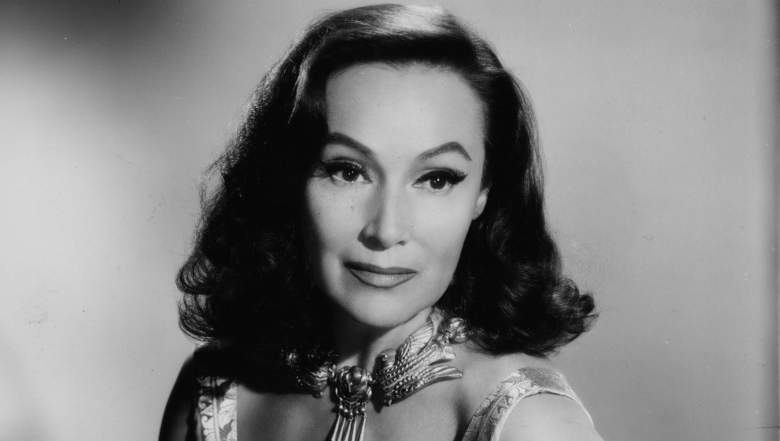
Getty Portrait of actress Dolores del Rio, 1960.
Dolores del Rio, an “iconic figure during the Golden Age of Mexican cinema” and the first major Mexican actress in American film, is the subject of the August 3, 2017 Google Doodle.
Del Rio was chosen as the subject for the Google Doodle because she is “considered the first major Latin American crossover Hollywood star,” a pioneer who “would pave the way for generations of actors to follow,” Google noted.
“A trailblazer for women in Hollywood and beyond, Dolores del Río’s legacy endures in American and Mexican cinema,” Google added. When del Rio died in 1983 at the age of 77, The New York Times called her an “actress of remarkable beauty who became a film star in Hollywood and in her native Mexico.” During her life and career, though, she faced typecasting in “exotic” roles and eventually returned to Mexico, where she had great success and was known as “the first lady of Mexican theater.”
Here’s what you need to know:
1. Del Rio Was Born in Mexico & Became One of America’s First Latina Film Stars
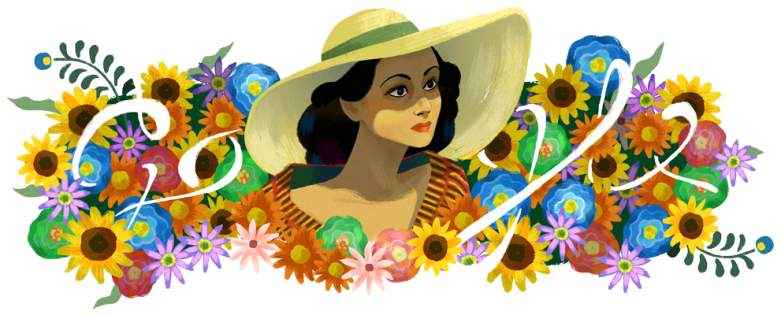
Dolores del Rio Google Doodle.
Del Rio was born in Durango, Mexico, as Lolita Dolores Martínez Asunsolo López Negrette.
According to ScreenDeco, she was “the child of a wealthy bank director and his wife. They enjoyed a lavish life of luxury, until their riches were lost due to the Mexican Revolution in 1916. However, an artistically inclined Dolores aimed to regain the original lifestyle of her family through the performing arts.”
Del Rio “was educated at St. Joseph’s Convent in Mexico City. She was presented to the King and Queen of Spain in 1919 and remained abroad, studying voice in Madrid and in Paris,” The Los Angeles Times reports.
The story of her discovery by a film director reads like a scene out of a movie itself.
Del Rio’s family had moved to Mexico City, where she married her much older first husband Jaime Martinez Del Rio, and “was discovered by First National Films Director Edwin Carewe while dancing a tango,” reports ScreenDeco.
Film International notes that the first marriage was loveless and the husband 18 years older, but his family was “one of the oldest and most influential in Mexico. Their wealth allowed for a European honeymoon, where the newlyweds even dined with the Spanish Royal family.” The marriage didn’t survive the transition to Hollywood, though.
Del Rio eventually lost her marriage but became America’s first Mexican movie star, moving to Hollywood at the age of 21.
2. The Actress Transitioned From Silent Movies to ‘Talkies’ & Was Known for Her Expressive Beauty
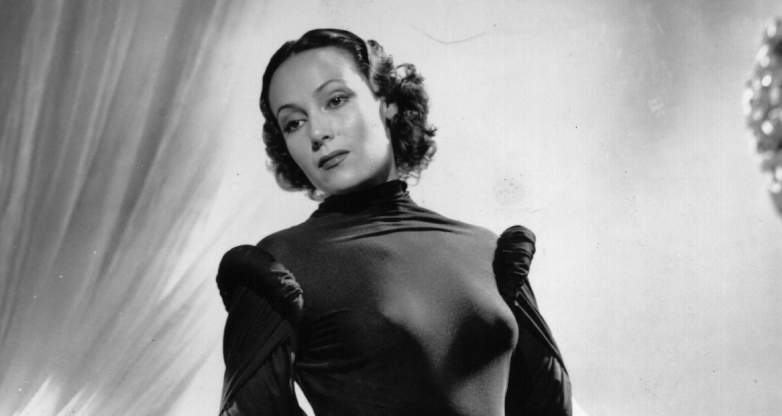
Mexican actress Dolores Del Rio (1905 – 1983).
Del Rio was, notes TCM, “easily one of the most beautiful women of her era.” She once said of beauty, though, “Take care of your inner beauty, your spiritual beauty, and that will reflect in your face. We have the face we created over the years. Every bad deed, every bad fault will show on your face. God can give us beauty and genes can give us our features, but whether that beauty remains or changes is determined by our thoughts and deeds.”
A face that The Times called “elegant and expressive” soon made her “one of Hollywood’s important actresses and one of its first Latin stars.” Some believe she influenced the style of Joan Crawford.
It didn’t take long for del Rio to find success in Hollywood. It took one year to be exact. Her first movie, The New York Times reported, was in 1925’s Joanna; she was labeled as a “Spanish actress” in the movie, but successfully demanded that her true heritage, Mexican, be used instead, according to the newspaper.
“Just a year after her first film, del Río’s first major success came in the 1926 comedy-drama war film What Price Glory?” Google wrote. In that movie, “Del Rio played French innkeeper’s daughter Charmaine, torn between loves for two American soldiers, delivering a vivacious performance,” reports Film International, which calls her the “first Latina to conquer Hollywood.”
She told Photoplay this character was closest to her, Film International noted, and said, “I am not, by nature, melancholy, weepy, sorrowful, languishing, or sweet. I am the girl of What Price Glory? There, for a bit, I could show my real self. I am, by nature, tempestuous, fiery, stormy, eager.”
From 1925 to 1929, del Rio starred in 15 silent films. Hollywood was facing a major change, though: The advent of sound in film.
In the 1930s, del Rio was able to make this transition, and she “earned starring roles and appeared in films opposite stars like Fred Astaire and Ginger Rogers, eventually returning to Mexico where she quickly became one of the top actresses in the Mexican film industry,” according to Google. However, the transition to talking films was not seamless as she still retained an accent, which led to stereotyping.
She appeared in American films for decades, including a role in John Ford’s Cheyenne Autumn in 1964. The Los Angeles Times, in a profile commemorating her Hollywood Star on the Walk of Fame, noted that she often played “exotic” heroines: “She was a Russian peasant in Leo Tolstoy’s Resurrection, a half-Native American girl in Ramona and a young Polynesian woman in Bird of Paradise.”
She danced with Fred Astaire in Flying Down to Rio. The 1933 film “swept away all concerns and controversy in its wake. Cinema history notes it as the first pairing of Fred Astaire and Ginger Rogers,” Film International reports.
3. Despite Her Successes, del Rio Struggled Against Typecasting in Hollywood
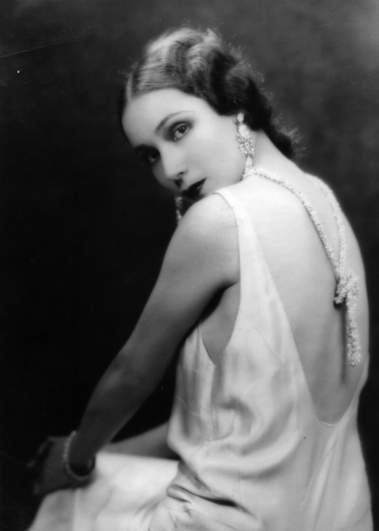
Dolores Del Rio.
Del Rio’s New York Times’ obituary notes that she wasn’t able to break all of the barriers of stereotyping.
“The director Edwin Carewe, who discovered her, said that he wanted to avoid her being typecast. But ultimately, her career in the United States suffered because producers invariably cast her in ethnic and exotic roles,” the newspaper wrote, listing several of these films, which came in the 1920s and 1930s and included Girl of the Rio and Loves of Carmen.
TCM concurs that del Rio’s career suffered because of discrimination. “Del Rio’s career in the 1920s and 30s unfortunately suffered from too many exotic, two-dimensional roles designed with Hollywood’s cliched ideas of ethnic minorities in mind. Her best-remembered film from this period is Flying Down to Rio (1933), which partnered Fred Astaire and Ginger Rogers for the first time,” the site notes.
She was tapped to play the “exotic heroine” in many of her films. She also struggled to get visas during the McCarthy era, reports Film International.
“I tried to interest my producers in stories about Mexico. I was forced to play glamorous characters which I hated,” she once said.
4. Del Rio Triumphantly Returned to Mexican Cinema, Where She Won That Country’s Equivalent of an Oscar
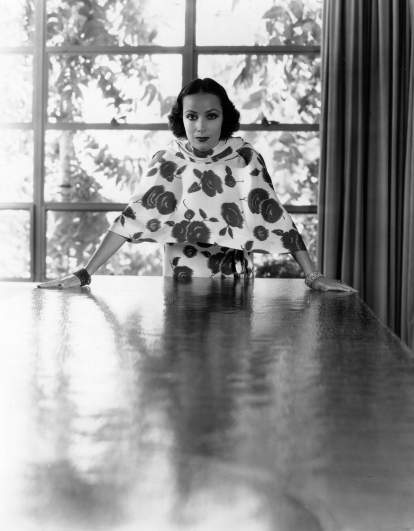
Dolores Del Rio (1905 – 1983) Hollywood film star and wife of MGM’s Art Director Cedric Gibbons. Seen in her dining room.
Eventually, del Rio returned to her home country of Mexico, and she enjoyed great success acting there. According to The Los Angeles Times, she returned “to reign there as queen of films.”
She returned to Mexico at an opportune time; there was “a renaissance in Mexican film” that some consider a Golden Age, reports Film International, which quotes del Rio as saying, “I didn’t want to be a star anymore. I wanted to be an actress. By 1940, I knew I couldn’t build a satisfying career on glamour, so I came home.”
She did that on “the stage and screen in her native Mexico” and “won that country’s equivalent of a Best Actress Oscar four times,” known as Arieles, notes TCM. Her films there included La Otra, Maria Candelaria, and Flor Silvestre. The return to Mexico also followed a tumultuous time period in del Rio’s personal life, in which she went through a second divorce and an ill-fated romance with one of Hollywood’s most famous men.
She was also known for her charity work and love of animals, and “founded the Society for the Protection of the Artistic Treasures of Mexico, working with philanthropist Felipe Garcia Beraza to protect buildings, paintings and other cultural works in Mexico,” according to Film International.
5. Del Rio Was Married to the Man Who Designed the Oscar & Had a Love Affair With Orson Welles
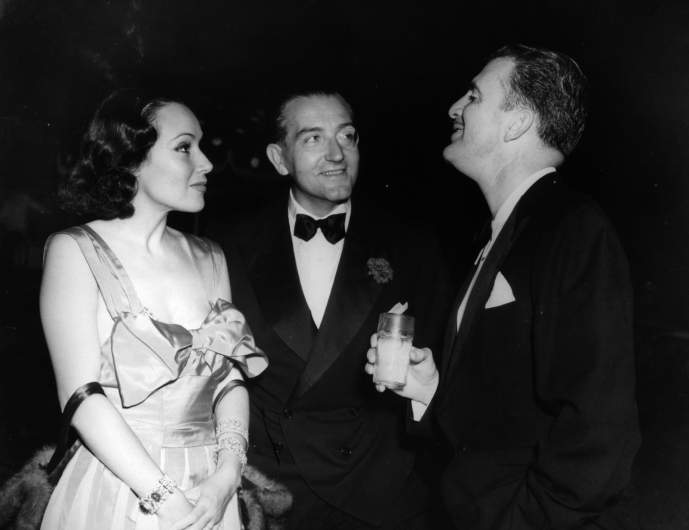
Actress Dolores Del Rio with her art director husband Cedric Gibbons, and Fritz Lang at the Rathbone party. Cedric designed the Oscar statuette for the Academy Awards.
Del Rio’s personal life was colorful. She was married three times, and dated Orson Welles.
At the time of her death in 1983, del Rio had been married to producer-director Lewis A. Riley for 23 years. He was at her side when she died, according to The Los Angeles Times.
She died of liver failure from hepatitis in Newport Beach, California.
Her second husband was MGM chief art director Cedric Gibbons. According to IMDB, Gibbons “designed the Oscar itself, winning it 11 of the 37 times he was nominated for it. Some of his designs influenced American interiors, and it has been argued that he was the most important art director in the history of American cinema.” Del Rio recommended the statue’s model to Gibbons, reported IMDB.
That marriage ended, and a romance with Orson Welles started, although it too would not last. As the result, though, del Rio filmed Journey Into Fear with Welles in 1942. It was one of many starring turns that helped cement her status as a pioneering legend.
